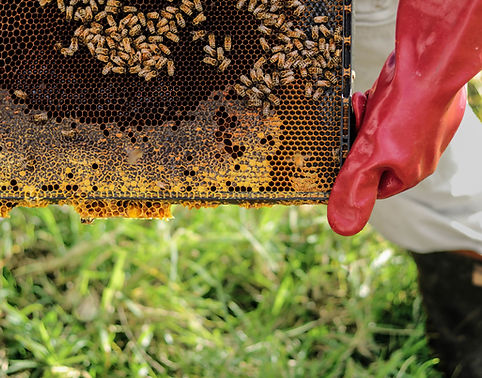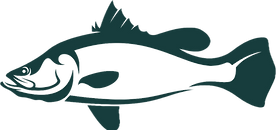
Our Barramundi

Saltwater Barramundi
Saltwater Barramundi from the mangrove-rich waters of Far North Queensland are truly one of a kind. The pristine coastal ecosystems offer the ideal natural conditions for Barramundi to thrive—clean saltwater, nutrient-rich tidal flows, and sheltered mangrove habitats that mimic their wild environment.
This unique setting helps produce strong, healthy fish with a clean, mild flavour and firm, flaky texture that chefs and seafood lovers appreciate. The mangroves not only support the health of the fish but also contribute to a more sustainable farming approach, preserving biodiversity and maintaining the natural balance of the region. It’s this harmony between nature and aquaculture that makes our Barramundi so special.
From the heart of Far North Queensland to your kitchen, our Saltwater Barramundi captures the true taste of Australia’s coast. Responsibly farmed, naturally delicious, and grown with care—this is Barramundi at its best.
The barramundis are fed sustainably with food pellets formulated from ingredients such as vegetables, grains, minerals, and vitamins. These pellets contain no meat products and are designed to provide a balanced diet, ensuring the barramundis thrive while minimising environmental impact.
What Makes The Mangroves of
Far North Queensland So Unique?
Of the 69 species world wide that can be classified as a mangrove 34 species can be found in Far North Queensland. Mangroves can be found in coastal areas in many parts of the world but the climate and landscape of Cairns provide the perfect conditions that mangroves need to grow. The mangroves of Far North Queensland are some of the tallest and oldest in the whole of Australia.
Cairns is also home to an endangered species of mangrove, the orange mangrove. It was thought there were only 200 orange mangroves living in the whole world. This was, until the recent discovery of 50 trees growing on the estuary of Trinity Inlet!


Many people would be surprised to learn that Saltwater Barramundi Farm is also an apiary (bee farm).
Honeybees collect nectar from mangrove flowers, playing a crucial role in pollinating certain mangrove species and ensuring the reproductive success of these coastal ecosystems. This symbiotic relationship between beekeepers, bees, and mangroves is significant, particularly in the restoration of threatened mangrove forests, illustrating circular benefits. Mangrove honey, one of the most sought-after varieties of organic honey, highlights the mutual benefits: bees benefit from the flowers, while mangroves benefit from pollination and regeneration.

01
Mangroves are tropical trees covering 14.8 million hectares globally, despite occupying only 0.1% of the earth’s surface. Their impact is substantial, as they store up to 10 times more carbon per hectare than terrestrial forests. This carbon storage occurs through ‘Blue Carbon, ’where leaves fall and sink into the mud.
02
Mangroves serve as a buffer against strong currents, rising sea levels, and storm surges, with their dense branches protecting animals and plants by shielding them from powerful waters. This feature provides visitors to Far North Queensland with an excellent opportunity to spot a wide variety of native wildlife.
03
Mangroves serve as breeding and feeding grounds for numerous fish and crustaceans. Around 75% of commercially and recreationally caught fish and prawns spend part of their life in mangroves. The branching
roots provide protection for various species, including mangrove jack, barramundi, snapper, blue threadfin, sea mullet, banana prawns, king prawns, mud lobsters, mud crabs, mangrove oysters, polychaete worms, estuarine crocodiles, white-bellied mangrove snakes, little file snakes, sea snakes, snails, barnacles, mollusks, sponges, crabs, and jellyfish. Crabs thrive in the mangrove canopy, while other animals such as bandicoots, dingoes, pigs, rodents, and crocodiles also inhabit the area.
Mangrove Facts
04
Mangroves possess shallow root systems, with some species replacing taproots with sprawling cable roots that anchor within the top 30cm of soil, providing stability and access to oxygen. They also develop aerial roots to transport atmospheric gases to the underlying roots. These roots grow in oxygen-deprived sediment and absorb saltwater, while waxy leaves eliminate up to 90% of excess salt. These adaptations enable mangroves to thrive in coastal environments.
Barramundi Lifecycle
#1 Barramundi are catadromous
fish meaning they are born in
the ocean and then live in fresh
water until they spawn. This is
the opposite to salmon.

#2 Barramundi tolerate a varied range of salinity. They are spawned in brackish water, such as tidal flats and near river mouths in mangroves. The juvenile males live in warm, turbid freshwater creeks, rivers, estuaries, or lakes, and up to 40 meters deep, where they can take cover around undercut banks, submerged logs, and overhanging vegetation. The adult females move into coastal saltwater systems, where they spend the remainder of their lives.
#4 Within their lifecycle, Barramundi will change from male to female. They mature first as functional male fish and then undergo a change to become female. They need to spawn before they can change from male to female.
#3 When males reach maturity at 3-4
years of age, they head down towards a salty estuarine environment to spawn. Females release up to 32 million eggs, which are then fertilized by the males. They need to spawn to change into females. They then move out into a saltwater environment. This is the opposite of salmon.







Barramundi Fun Facts
1
Name
Barramundi: an Aboriginal
word meaning ‘Large Scale
Silver Fish’ . Barramundi are
also known as Asian Seabass, although their scientific common name is Barramundi Perch. The scientific name is Lates calcarifer.
2
Sportfish
Barramundi are salt and
freshwater sportfish.
Whether you are an angler looking for a the
excitement of catching this
powerful fighter or food
enthusiast, barramundi
offers something for
everyone.
3
Wild
In the wild, barramundi can
reach up to 1.52 meters in
length, though evidence of
them being caught at this
size is rare. They can weigh
up to 55 kg. Farmed
barramundi average about
400g in weight and 35cm in length.
4
Farmed
In Australia, there are many
sustainable fish farms with strict environmental
standards, minimising
impacts on natural
ecosystems. Trinity Beach
Saltwater Barrumundi Farm
adheres to all standards.
5
Age
The age of barramundi is determined by counting growth rings on the scales, much like counting growth rings found on a tree. There are many factors that can affect the growth of a fish, such as food availability and water conditions. As a result, length- age relationships can differ between areas. Barramundi are known to live for over 20 years.
